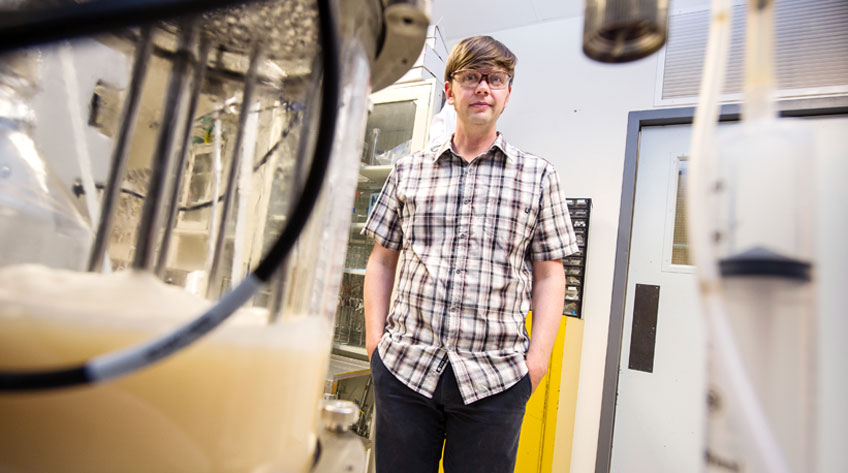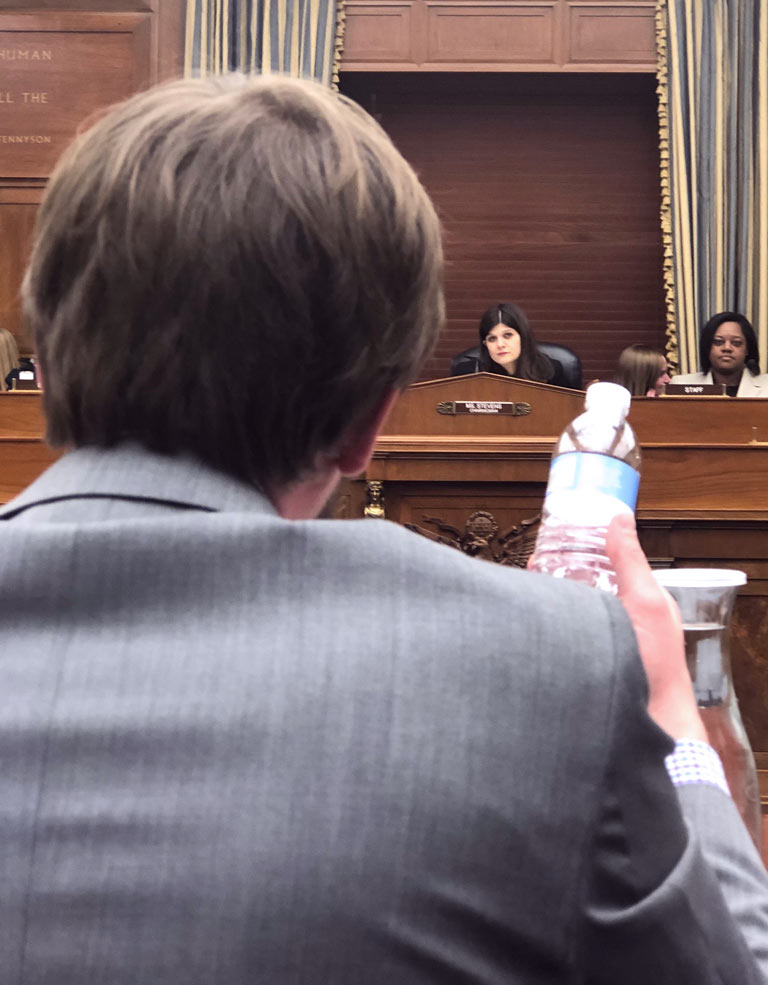NREL Research Fellow Testifies on Plastic Recycling Before House Subcommittee

"We urgently need a national strategy to build out our country's recycling infrastructure," Rep. Haley Stevens began as she opened an April 30 hearing of the U.S. House of Representatives Committee on Science, Space, and Technology's Subcommittee on Research and Technology, adding, "It is our opportunity to seize."
In its first meeting on recycling in more than a decade, the subcommittee welcomed a panel of witnesses to discuss emerging technologies that have potential to turn a critical challenge—the accumulation of plastic waste in overwhelmed recycling facilities, landfills, and nature—into an environmental and economic opportunity for the United States and other countries. NREL Senior Research Fellow Gregg Beckham was invited to speak on what he and his team believe is a key element of the solution: chemical recycling.
Plastic materials are clearly essential to modern life—but as several witnesses mentioned, it's hard to turn on the TV or browse the web without seeing poignant examples of the plastic life cycle extending far beyond usefulness. It can take hundreds of years for plastic materials to break down in the environment, so once-pristine beaches on remote, uninhabited islands have become littered with plastic waste and a "garbage patch" the size of Texas has formed in the Pacific Ocean.
It has been known for some time that plastics, broken down into smaller and smaller pieces, are found far and wide in the soil and in the entirety of the global food chain—but a recent study shows that microplastics are also carried in the air we breathe. Plastic is now a common material in the human body—with potential toxicological effects that are not yet fully understood.
And the plastic pollution problem continues to grow. China's 2018 ban on the purchase of many types of waste plastic shines new light on what happens to our recyclables after the blue bin is emptied. For three decades, the United States and other countries shipped used plastic materials to be sold and recycled in China. Now, U.S. municipalities and waste-management companies are experiencing overflows and massive stress on existing recycling processes, leading to increased costs that impact consumers and taxpayers.
"In many cases, U.S. cities are being forced to cut longstanding recycling programs and are instead incinerating recyclables or leaving them in landfills, releasing dangerous emissions," Stevens said. "Americans who are trying to do the right thing for our environment are left unaware that their efforts are for naught."

In his testimony, Beckham discussed the need for recycling research to highlight how universities, government research laboratories, industry, and municipalities can spur innovation and seize significant opportunities in this space. He highlighted specific examples relevant to his team's work at NREL, but the opportunities and capabilities he discussed are applicable to many of the nation's biologists, chemists, chemical engineers, and experts in related fields.
"We must address two questions," Beckham said. "How do we handle the stream of plastics we generate today? And how do we design the plastics of tomorrow?"
Beckham explained that, today, nearly all recycling is mechanical in nature. For example, a common single-use polyethylene terephthalate (PET) plastic bottle is usually chopped into flakes and then heated to create new PET plastic, which typically exhibits compromised material properties relative to the original material. The value of the reclaimed PET is significantly lower, and in many cases, will ultimately end up in a landfill anyway. Thus, most recycling of this nature can be thought of as "downcycling."
It is here that Beckham sees a significant opportunity for the United States and other countries to rethink and reinvent the recycling value and supply chain, creating economic incentives for plastic recycling and a more circular materials economy. Through chemical recycling (using chemical or biological catalysts o break plastics down to their building blocks and then put them back together), he and his team are demonstrating that it's possible to create new, virgin-like materials—or even higher-value materials.
"One obvious option in the case of chemical recycling is to take this PET bottle and convert it back into a PET bottle that has the same properties," Beckham said, holding up a typical single-use plastic water bottle. "Conversely—and, I think, more interestingly—there's potential for the concept of plastics 'upcycling' … put it into something that has a much longer lifetime and much higher value. For example, this PET bottle could be turned into a composite material for a car—it could go into a wind turbine."
Learn about NREL's work to develop a cleaner route to upcycle plastics.
Last Updated May 28, 2025
